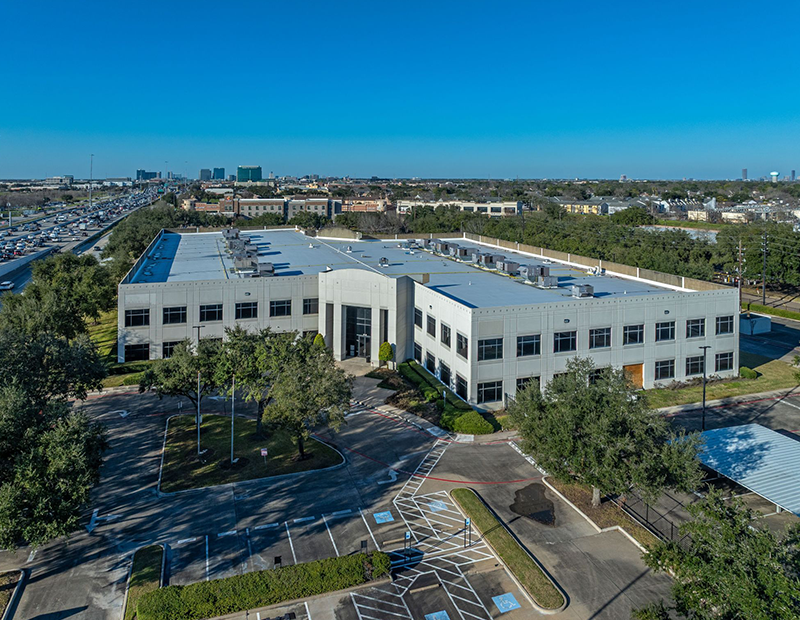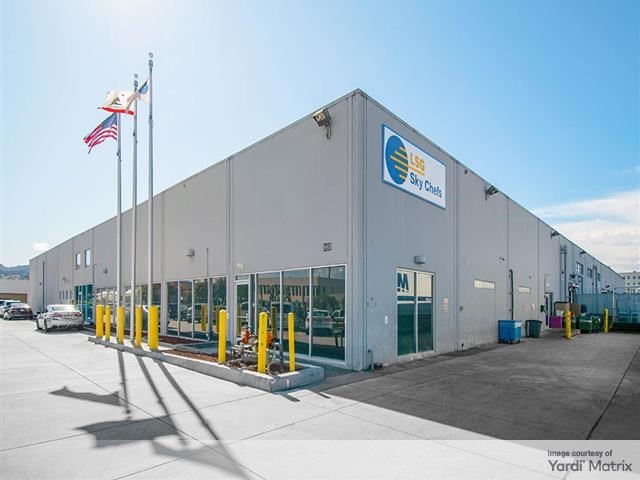Staying Disciplined, Hedging Risk in Tomorrow’s CRE Financing World
Where is lending headed? Executives from Citigroup, TPG, Goldman Sachs and Blackstone tackled that crucial question at the latest DLA Piper Global Summit.

DLA Piper Global Real Estate Summit 2019. Left to right: Mark Myers, Tom Flexner, Greta Guggenheim, Jonathan Pollack and Tiffany Thurber. Image courtesy of Michelle Weeks
At DLA Piper’s 15th Global Real Estate Summit, the second of two sessions on commercial real estate’s financial side, titled “The Future of Real Estate Finance,” tackled a daunting subject, but the panelists brought decades of experience to their spirited discussion.
Moderator Mark Myers, executive vice president & head of commercial real estate at Wells Fargo, started the conversation by noting that the mortgage market is about a $3.5 trillion business, roughly 50 percent of which is held in the regulated commercial bank market. The remainder is roughly equal parts CMBS, life insurers, the GSEs and other non-regulated lenders, both public and private.
“The lanes now are confused, because everybody plays in everybody else’s lane,” Myers said, adding that “Delinquencies are at an all-time low in the debt space, less than 1 percent, about 70 basis points. To put that in perspective, at the height of the great financial crisis, delinquencies were about 9 percent.”
See our full coverage of the 2019 DLA Piper Global Summit
Asked to comment on how CRE lenders will make it through 2020, panelist Tom Flexner, vice chairman & global head of real estate at Citigroup, noted that this is the longest business cycle we’ve ever seen. He pointed out, however, that “There’s no law that requires a baseball game to end at nine innings.”
Flexner added that any of multiple factors—but probably not CRE—could precipitate the next recession. Greta Guggenheim, CEO & president of TPG Real Estate Finance Trust, said that despite perhaps a little loosening in private debt funds, “There is very significant discipline in the market.”
Myers focused on this topic for a bit, asking how lending discipline is maintained with so much money out there.
Tiffany Thurber, vice president in Goldman Sachs & Co.’s investment banking division, commented that a majority of studies have shown that loan-to-value ratios in CMBS have improved. As for Goldman Sachs, she added: “A lot of times we’re focused on a market that we really like, a sponsor we really like, but maybe they’re a slightly riskier loan to get to the right cost of capital.”
“We just don’t see a lot of requests that are irresponsible in terms of leverage,” said Jonathan Pollack, Blackstone senior managing director & global head of real estate debt strategies. He added that most people crafting deals these days are very careful to allow for the possibility of market volatility.
The problem of values
Myers then asked about a disconnect in values between public and private markets. “Sometimes they actually dovetail, but increasingly they don’t,” Flexner said. “Historically, you would find that public REIT values and private real estate values were pretty much on top of one another. That was at a point in time when most public REIT investors were sort of core real estate investors.”
“But over the past few years,” he continued, “the REIT market has attracted people we call tourists, which are the hedge funds. And they’re not even thinking about NAV. They’re thinking about dividend growth, stock appreciation, unrelated to the net asset value discipline that the core guys did. So you’ve seen this sort of decoupling over time” in multiple property types.
“It’s not unusual, and I don’t think it’s necessarily worrying,” Flexner summed up. The question is often asked whether net asset values or public values are more predictive, he said, “and I don’t think anybody knows.”
Asked which specific markets or asset classes are problematic, Guggenheim replied, “The most important thing is alignment of interests between the lender and borrower. And if you have real skin in the game, that’s really important—and to keep that skin in the game until the property is showing some positive cash flow.”
Before the recession, she said, “You did see lenders get a little too exuberant and underwrite cash flow that didn’t exist, using market rents that had never been achieved” and in fact never materialized. Now, however, “Having in-place cash flow is really key.”
“There is a lot of competition,” Guggenheim continued. “It’s very easy for a borrower to obtain a well-structured transitional loan today,” even though real estate underwriters are more disciplined now. “Retail for a lender has been challenging for quite some time,” she said, especially for Class B or lower malls that are struggling for cash flow.
“The best thing you can do to tilt the odds in your favor,” Pollack said, “is to be in a place where you’re seeing a lot of rental growth and hopefully not a huge amount of supply following that growth.”
READ ALSO: Commercial, Multifamily Originations—See the Figures
Goldman Sachs does a lot of single-tenant lending in the CMBS space, Thurber said, and “That is very corporate parent–dependent.”
Myers commented that according to Wells Fargo’s own loan servicing, they’re seeing outsized or increasing delinquencies in student housing, partly because of excess supply; in the suburban hotel market; and in single-tenant office and secondary locations.
Risks—and looking ahead
Meyers moved the discussion along to how do the panelists think about risks, including interest rate uncertainty, the economic cycle, the regulatory environment and global economic conditions.
“We try to think about everything we can,” was Flexner’s answer. A la Donald Rumsfeld, he said, “We try to focus on what we know that we don’t know, because those are the risks, and the risks that you don’t even know about, those are the real ones.”
Regarding interest rates, Flexner said, it’s important for loans intended for securitization to condense the time between origination and securitization. Still, he stressed, “I don’t think you can originate a loan that you’re not willing to own.”
“We’ve seen a lot of people go toward this L-shape,” said Thurber, that is, taking a small vertical sliver of the capital stack that stays on the balance sheet, plus a horizontal slice that can be sold.
“The real interest rate risk is not whether you’re hedging your rate,” Flexner said. “The real interest rate risk is what happens seven years down the road with a balance sheet loan, when interest rates spike, and the residual value gets nailed.”
“The great news in that regard,” he continued, even with CRE values propped up in large measure by low interest rates, is that the average LTV is now in the mid-50s, versus 10 percentage points higher 11 years ago. Similarly, debt service coverage ratios are much higher now than before the recession—at least 2 versus about 1.3 then—Flexner said. “There’s more capacity for interest rates to rise without the senior lender getting knocked off — but it’s still troubling.”
Myers wrapped up by asking how the industry might look different in five years.
“Technology for real estate has a long way to go to be truly useful,” said Guggenheim. Though tech can help gather data and put it in a useful format, “Particularly on the credit side, it comes down to individual judgments.”
Flexner predicted that the GSEs will reduce their multifamily lending and focus more on subsidized and affordable housing, and that EB-5 financing could become be far more restricted.
Finally, Guggenheim opined, “Our entire industry needs to incorporate interest-rate floors.”







You must be logged in to post a comment.